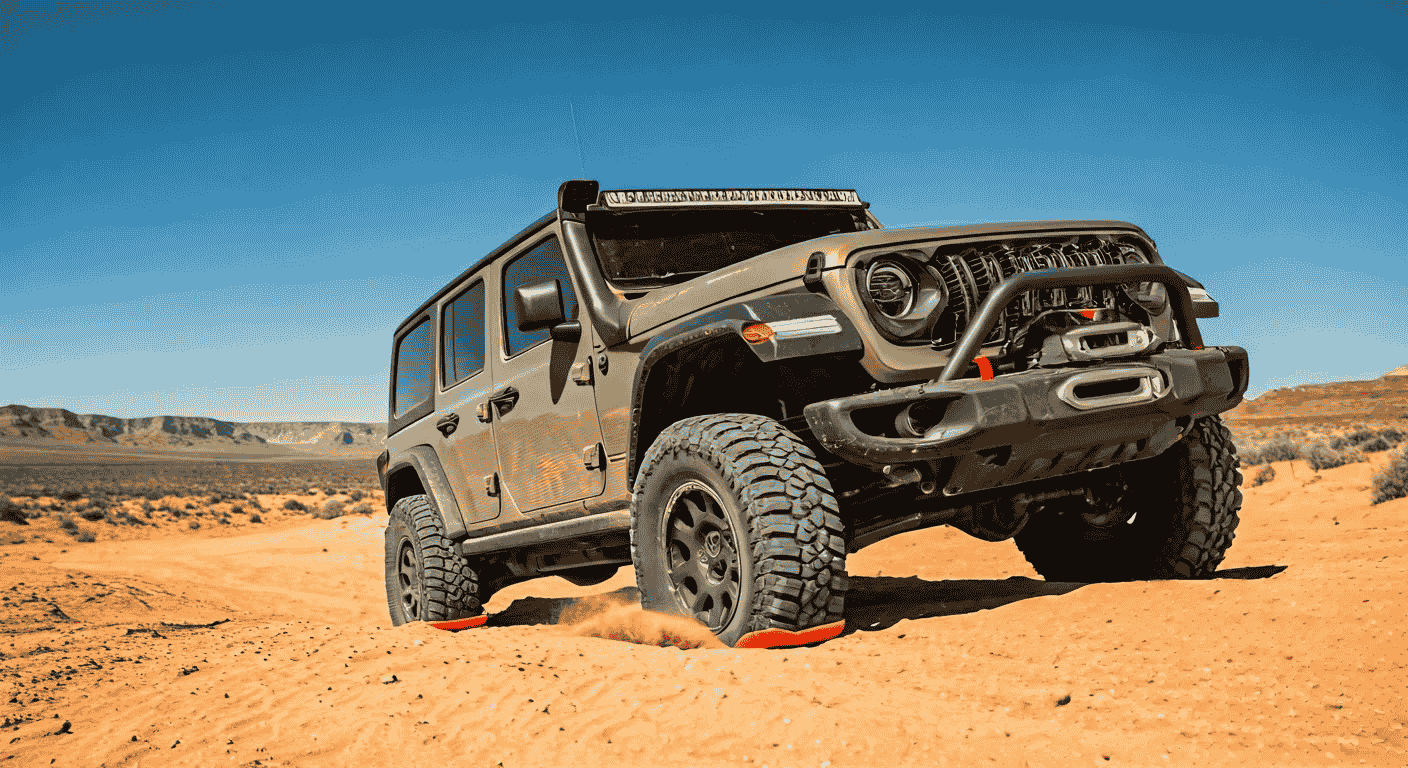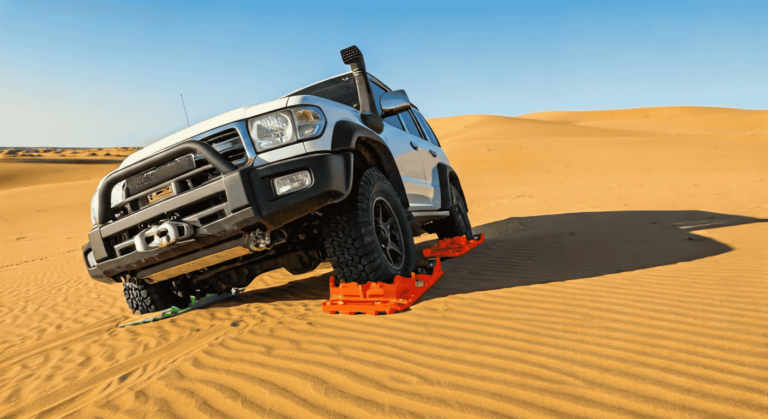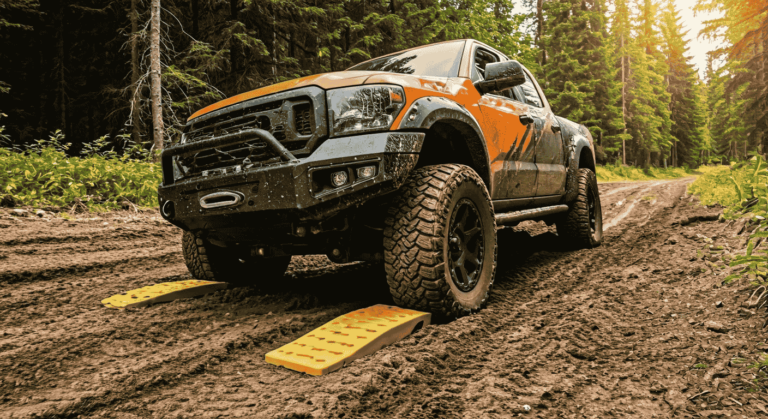Understanding Recovery Traction Boards
What Are Recovery Traction Boards?
Recovery traction boards are rugged devices designed to provide vehicles with the necessary grip when stuck in challenging terrains such as mud, sand, or snow. Made from high-strength, impact-resistant materials, these boards feature raised treads and specialized patterns that maximize tire traction. They act as a stable surface for tires to regain grip, making them an essential addition to any off-road toolkit.
Why Every Off-Roader Needs Traction Boards
For avid off-roaders, unexpected obstacles are inevitable. Recovery traction boards offer a reliable, self-sufficient recovery solution without requiring external assistance. Unlike winches or tow straps, traction boards are lightweight and easy to maneuver, providing a quick and effective way to regain momentum. They are particularly invaluable in remote areas where external help may not be accessible.
Key Features and Materials for Maximum Effectiveness
Modern traction boards are typically constructed from reinforced nylon or polypropylene, offering an excellent balance of flexibility and durability. The boards’ aggressive cleats grip tires firmly, reducing wheel spin. Some models incorporate UV-resistant coatings and thermoplastic elastomer inserts for added durability. Additionally, many designs offer ergonomic handles and mounting holes for seamless storage.
How Recovery Traction Boards Compare to Other Recovery Tools
While winches and tow straps are valuable, they often require a secondary vehicle or anchor point. In contrast, traction boards are independent and require no external elements. They are also safer, reducing the risk of rope or strap recoil. For solo travelers or overlanders, traction boards are a reliable first line of defense.
Choosing the Right Recovery Traction Boards for Your Vehicle
Factors to Consider Based on Vehicle Type and Weight
The choice of traction boards should align with your vehicle’s size and weight. Heavy-duty boards are ideal for larger trucks and SUVs, while compact versions suit smaller vehicles like ATVs. Pay attention to the load capacity ratings to ensure they can withstand the force of your vehicle’s tires.
Understanding Different Traction Board Designs and Tread Patterns
Traction board treads vary, with some designed specifically for snow, mud, or sand. Boards with deeper, more aggressive patterns offer better grip in loose soil, while those with finer cleats excel on icy surfaces. Consider your typical off-road environment when selecting the most effective tread design.
Evaluating Durability, Size, and Load Capacity
Choose boards that balance weight and durability. Larger boards provide more coverage and better traction but may be cumbersome to store. Reinforced models with impact-resistant properties are advisable for rugged terrain.
Popular Brands and Models: Pros and Cons
- Maxtrax: Offers premium durability with excellent UV resistance.
- TRED: Provides an affordable yet durable alternative.
- X-Bull: A popular budget-friendly option, offering decent performance for occasional use.
Essential Preparation Before You Hit the Trail
Inspecting and Maintaining Your Recovery Traction Boards
Before setting out, inspect your traction boards for any cracks, excessive wear, or damage. Ensure all mounting points and handles are intact. Clean off any dirt or debris to prevent additional wear during use.
Packing and Securing Boards for Easy Access
Mount your boards securely using dedicated brackets or straps. Ensure they are easily accessible in emergencies. Roof racks and tailgate mounts are popular options that balance accessibility and space management.
Other Recovery Gear to Have on Hand
- Sturdy shovel
- Tire deflator
- Recovery straps
- Portable air compressor
Understanding Terrain and Anticipating Recovery Scenarios
Study the route before venturing out. Identify potential recovery spots, paying attention to slopes, soft sand, or water crossings. Understanding your vehicle’s ground clearance and approach angles can also prevent unnecessary recovery situations.
Step-by-Step Guide to Using Recovery Traction Boards
Spotting the Signs of Tire Slippage and Loss of Traction
Recognize signs of wheel spin and loss of momentum early. If your tires are digging into the terrain without progress, it’s time to use the boards.
Positioning the Boards for Optimal Recovery
Clear excess debris or sand from around the tires. Align the boards in front or behind the tires, depending on your desired direction. Ensure the boards are flush against the tires to minimize further digging.
Safe Techniques for Inserting and Removing Traction Boards
Apply gentle throttle pressure to allow the tires to grip the boards. Avoid excessive acceleration to prevent damage. Once free, drive slowly to prevent re-sticking and retrieve the boards carefully.
Adjusting Angles for Different Terrain Types: Sand, Mud, and Snow
- Sand: Reduce tire pressure for increased surface area and traction.
- Mud: Ensure the boards are firmly planted to prevent slipping.
- Snow: Clear away any ice buildup from the tires for better grip.
Avoiding Common Mistakes That Could Damage Your Boards or Vehicle
Avoid spinning your tires aggressively as this can melt or deform the boards. Ensure boards are positioned correctly to prevent damage to the vehicle’s undercarriage.
Advanced Techniques for Difficult Recovery Situations
Using Multiple Traction Boards for Enhanced Stability
In extreme conditions, using two or more boards per tire can distribute weight more evenly and prevent further sinking.
Combining Traction Boards with Winches and Straps
In situations where boards alone are insufficient, combining them with a winch can provide the extra pull needed. Attach recovery straps to secure anchor points for additional support.
Managing Side Slope and Uneven Ground Recovery
When stuck on a slope, carefully angle the boards to minimize sliding. Place additional boards on the downside for stability.
Handling Extreme Weather Conditions During Recovery
In freezing temperatures, traction boards may become brittle. Warm them slightly before use if possible. In wet conditions, apply steady throttle to prevent hydroplaning.
Maintaining and Storing Your Recovery Traction Boards
Cleaning Off Mud, Sand, and Debris After Use
After use, rinse your boards with water to remove mud and sand. For stubborn debris, use a stiff brush to clean the treads.
Inspecting for Cracks, Wear, and Tear
Regularly inspect your boards for cracks or deformation. Pay attention to cleat wear as reduced traction can compromise recovery effectiveness.
Proper Storage to Prevent UV Damage and Warping
Store your boards in a shaded, dry area to prevent UV degradation. Consider UV-protectant sprays to further enhance longevity.
Tips for Maximizing the Lifespan of Your Boards
- Avoid using boards on sharp rocks or excessively abrasive terrain.
- Rotate use between multiple boards to reduce wear on any single one.
Real-World Scenarios: Learning from Successful Recoveries
Off-Road Enthusiasts Share Their Recovery Stories
Hear firsthand experiences from seasoned off-roaders who relied on traction boards to navigate challenging situations.
Lessons Learned from Common Recovery Mistakes
Analyze recovery scenarios where mistakes were made, offering actionable insights to prevent similar issues.
Photos and Videos of Traction Boards in Action
Visual examples demonstrate proper techniques and provide a clearer understanding of how traction boards operate.
Final Thoughts: Why Recovery Traction Boards Are a Must-Have
Confidence and Peace of Mind for Any Off-Road Adventure
With recovery traction boards onboard, off-roaders can explore remote areas with confidence, knowing they have a reliable means of self-recovery.
Investing in Quality Traction Boards for Long-Term Use
Quality traction boards are a worthwhile investment, providing years of dependable performance when maintained properly.
Encouraging Safe and Responsible Off-Roading
By using traction boards responsibly and adhering to Leave No Trace principles, off-roaders contribute to preserving trails and ensuring safe, enjoyable adventures for all.




